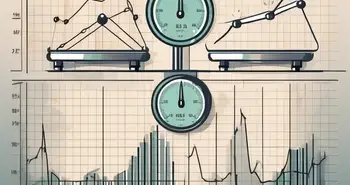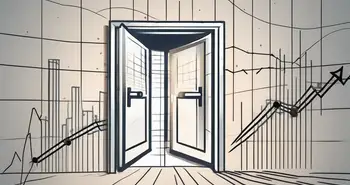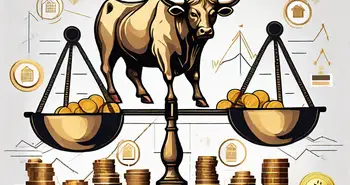Effective Natural Gas Trading Strategy

As an expert in natural gas trading, I am excited to share with you a comprehensive guide on creating an effective natural gas trading strategy. Whether you are a seasoned trader or just starting out, this guide will equip you with the knowledge and tools to navigate the natural gas market successfully.
Understanding Natural Gas Trading
Before diving into the intricacies of natural gas trading, it is essential to grasp the basics. Natural gas trading involves buying and selling contracts for the delivery of natural gas. These contracts are traded on exchanges and can be bought and sold like any other commodity.
When it comes to natural gas trading, one must also consider the role of infrastructure in the supply chain. Pipelines, liquefaction plants, storage facilities, and distribution networks all play a crucial role in ensuring the smooth flow of natural gas from production sites to end consumers. Understanding the infrastructure landscape can provide valuable insights into potential bottlenecks or disruptions that may impact trading activities.
The Basics of Natural Gas Trading
In natural gas trading, it is vital to understand the fundamentals of supply and demand. Factors such as production levels, storage capacity, weather patterns, and geopolitical events can significantly impact natural gas prices. Keeping a close eye on these factors will help you make informed trading decisions.
Moreover, technological advancements in the natural gas sector, such as the development of shale gas extraction techniques and advancements in liquefied natural gas (LNG) technology, have revolutionized the industry. These innovations have not only increased the global supply of natural gas but have also introduced new trading opportunities and market dynamics that traders need to navigate.
Key Factors Influencing Natural Gas Prices
Several key factors influence natural gas prices. Weather conditions, such as extreme cold or heatwaves, can drive up demand for natural gas. Geopolitical events, such as conflicts in major natural gas-producing regions, can also impact prices. Understanding these factors will enable you to anticipate market movements and make profitable trades.
Furthermore, environmental considerations and regulations are becoming increasingly important in natural gas trading. With growing concerns about climate change and the transition to cleaner energy sources, traders need to stay abreast of evolving environmental policies and their potential impact on natural gas markets. Being mindful of these factors can help traders adapt to changing market dynamics and capitalize on emerging opportunities.
Building a Successful Natural Gas Trading Strategy
Now that you have a foundational understanding of natural gas trading, let's discuss how to build a successful trading strategy. A robust strategy involves analyzing market trends and effectively managing risks.
When delving into the world of natural gas trading, it's essential to consider not just the current market conditions but also the broader economic and geopolitical factors that can impact prices. Factors such as supply and demand dynamics, weather patterns, government regulations, and global energy trends all play a role in shaping the natural gas market. By staying informed and conducting thorough research, you can gain a more comprehensive understanding of the market and make more informed trading decisions.
Analyzing Market Trends
Market trends can provide valuable insights for trading decisions. By analyzing historical price data and technical indicators, you can identify patterns and trends that can help predict future price movements. Implementing a systematic approach to market analysis will enhance your trading strategy.
Furthermore, it's crucial to stay abreast of emerging technologies and innovations in the natural gas sector. Advancements in extraction techniques, renewable energy integration, and regulatory developments can all influence market trends. By keeping a pulse on industry advancements, you can adapt your trading strategy to capitalize on new opportunities and navigate potential risks.
Risk Management in Natural Gas Trading
Risk management is paramount in natural gas trading. Volatility is inherent in commodities markets, and to protect your capital, you must have a well-defined risk management plan. This plan should include setting stop-loss orders, monitoring market news, and diversifying your portfolio to mitigate potential losses.
In addition to traditional risk management strategies, it's also beneficial to consider the environmental and social implications of your trading activities. As the world shifts towards sustainable energy practices, being mindful of the environmental impact of natural gas extraction and consumption can help you make more ethically sound trading decisions. By incorporating environmental, social, and governance (ESG) factors into your risk management framework, you can align your trading strategy with broader sustainability goals and contribute to a more responsible energy trading ecosystem.
Technical Analysis in Natural Gas Trading
Technical analysis plays a crucial role in natural gas trading. By utilizing various technical indicators, traders can gauge market sentiment and identify potential entry and exit points.
When delving into the world of natural gas trading, it's essential to understand the intricate dance of supply and demand dynamics that influence price movements. Technical analysis serves as a compass in this volatile market, offering traders a roadmap to navigate the fluctuations and make informed decisions.
Importance of Technical Analysis
Technical analysis helps traders make informed decisions based on historical price patterns and market data. By studying charts and indicators, you can gain insights into market trends, support and resistance levels, and price momentum. This information is invaluable when formulating your trading strategy.
Moreover, technical analysis empowers traders to interpret the psychology of the market participants. Understanding the collective behavior of buyers and sellers can provide valuable clues about potential price movements, giving traders a competitive edge in the natural gas market.
Popular Technical Indicators for Natural Gas Trading
There are several technical indicators commonly used in natural gas trading. Some popular ones include moving averages, relative strength index (RSI), and moving average convergence divergence (MACD). These indicators provide traders with signals for potential buying or selling opportunities.
Additionally, advanced technical tools like Bollinger Bands and Fibonacci retracement levels offer traders deeper insights into market trends and potential reversal points. By combining these indicators with sound risk management practices, traders can enhance their trading strategies and optimize their decision-making process in natural gas trading.
Fundamental Analysis in Natural Gas Trading
While technical analysis is important, fundamental analysis also plays a significant role in natural gas trading. Understanding the underlying supply and demand factors can provide additional insights into price movements.
Understanding Supply and Demand
Supply and demand dynamics are fundamental drivers of natural gas prices. Factors such as production levels, storage inventories, and consumption patterns heavily influence market prices. By monitoring these factors, you can gain a comprehensive understanding of the market and make informed trading decisions.
Impact of Weather Conditions on Natural Gas Prices
Weather conditions have a direct impact on natural gas prices. Extreme weather events, such as hurricanes or cold waves, can drive up demand for natural gas as it is used for heating and electricity generation. Keeping a close eye on weather forecasts is crucial for effectively trading natural gas.
Advanced Trading Strategies for Natural Gas
For seasoned traders looking to implement more advanced strategies, swing trading and position trading offer excellent opportunities to capitalize on natural gas market fluctuations.
Swing Trading in the Natural Gas Market
Swing trading involves taking advantage of short to medium-term price swings in the market. Traders identify price patterns and trends and aim to capture profits by entering and exiting trades at strategic points. Swing trading can be particularly effective in volatile markets such as natural gas.
Position Trading for Long-Term Profit
Position trading is a long-term strategy that aims to capture significant market trends over extended periods. Traders who employ this strategy hold positions for weeks or even months, profiting from macro-level price movements. Position trading requires patience and a thorough understanding of market fundamentals.
As an experienced natural gas trader, I would like to share a personal story with you. Early in my trading career, I underestimated the importance of risk management. One significant market swing resulted in substantial losses, teaching me a valuable lesson about the importance of setting stop-loss orders and managing risk effectively. Since then, I have prioritized risk management in all my trades, which has significantly improved my overall trading performance.
FAQs
What is natural gas trading?
Natural gas trading involves buying and selling contracts for the delivery of natural gas. Traders speculate on the price movement of natural gas, aiming to profit from market fluctuations.
What are the key factors influencing natural gas prices?
Several key factors influence natural gas prices, including supply and demand dynamics, weather conditions, geopolitical events, and production levels. Understanding these factors is essential for successful trading.
What is technical analysis?
Technical analysis involves analyzing historical price data and utilizing various indicators to predict future price movements. It helps traders identify patterns, trends, and potential entry and exit points.
How does fundamental analysis affect natural gas trading?
Fundamental analysis in natural gas trading involves understanding the underlying supply and demand factors that impact prices. Monitoring factors such as production levels, storage inventories, and consumption patterns helps traders make informed trading decisions.
What are some advanced trading strategies for natural gas?
Advanced trading strategies for natural gas include swing trading and position trading. Swing trading involves taking advantage of short-term price swings, while position trading is a long-term strategy aiming to capture significant market trends over extended periods.
Now armed with this comprehensive guide, you are well on your way to becoming a successful natural gas trader. Remember to conduct thorough research, stay updated on market trends, and most importantly, manage your risks effectively. With practice and experience, you will master the art of natural gas trading and achieve consistent profitability.
Ready to elevate your natural gas trading strategy with cutting-edge technology? Look no further than Morpher, the revolutionary trading platform that empowers you with zero fees, infinite liquidity, and the ability to trade with fractional shares. Whether you're interested in leveraging up to 10x on trades or exploring short selling opportunities, Morpher's unique trading experience on the Ethereum Blockchain is designed to enhance your investment journey. Take control of your trading with the safety and flexibility of the Morpher Wallet. Sign Up and Get Your Free Sign Up Bonus today, and join the community of traders who are reshaping the future of investing.

Disclaimer: All investments involve risk, and the past performance of a security, industry, sector, market, financial product, trading strategy, or individual’s trading does not guarantee future results or returns. Investors are fully responsible for any investment decisions they make. Such decisions should be based solely on an evaluation of their financial circumstances, investment objectives, risk tolerance, and liquidity needs. This post does not constitute investment advice.

Painless trading for everyone
Hundreds of markets all in one place - Apple, Bitcoin, Gold, Watches, NFTs, Sneakers and so much more.

Painless trading for everyone
Hundreds of markets all in one place - Apple, Bitcoin, Gold, Watches, NFTs, Sneakers and so much more.









